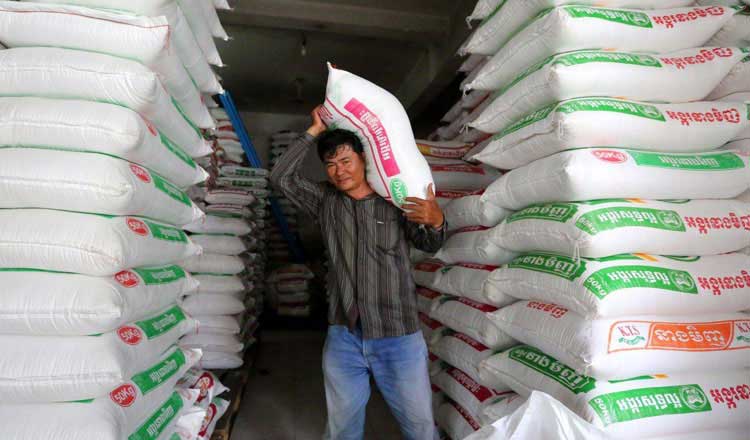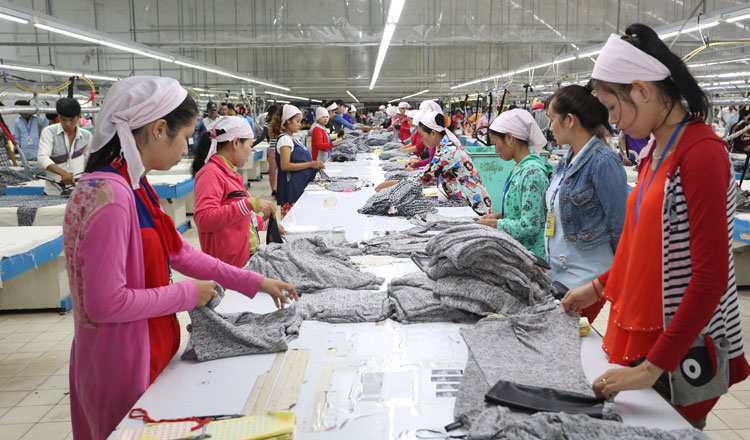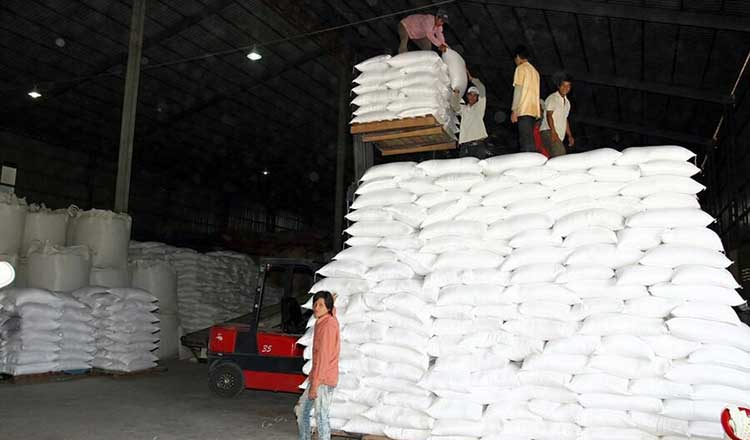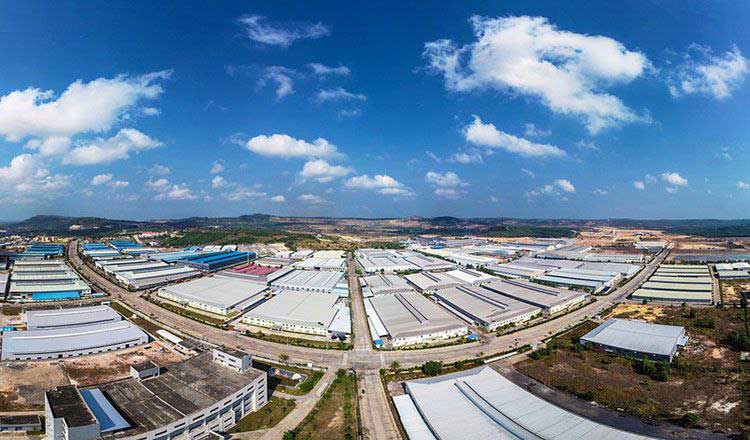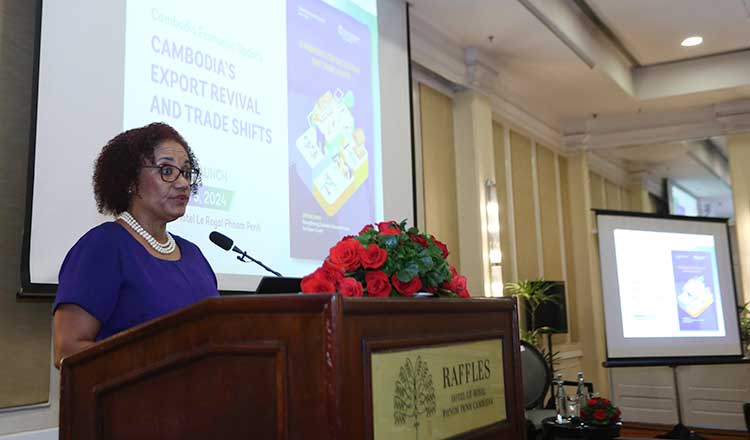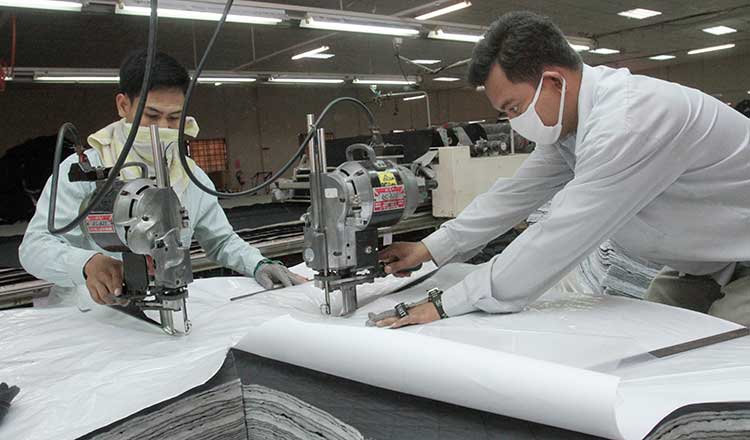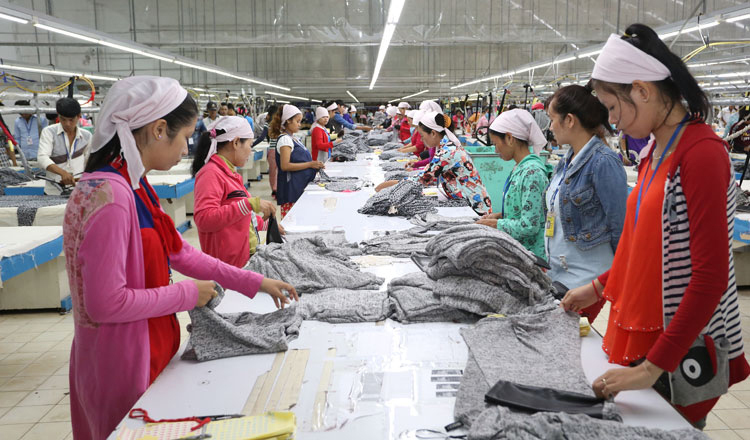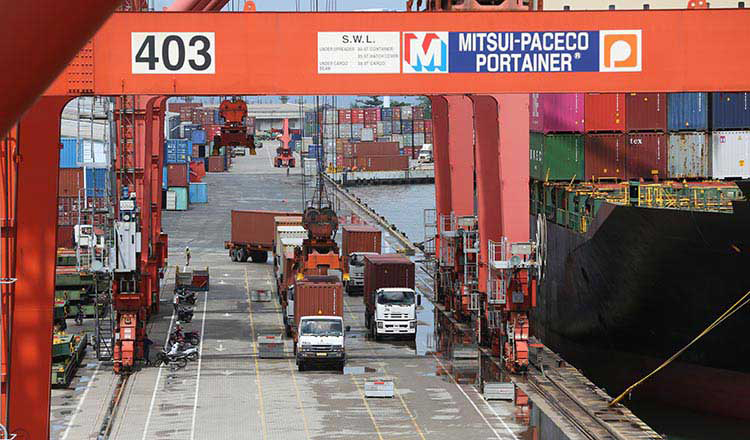Cambodia must diversify, attract FDI to realize economic goals
Cambodia must diversify, attract FDI to realize economic goals
Cambodia requires new strategies to diversify its economy as it braces for graduation from the Least Developed Country (LDC) status. A recent ADB report shows that the country is still heavily dependent on the garments, footwear and travel goods (GFT) sector as its growth engine. The graduation will bring fresh challenges such as a loss of preferential trade tariffs. The country also has to strategically push for more Foreign Direct Investments (FDIs). Khmer Times looks into the possibilities and challenges Cambodia faces with impending LDC graduation
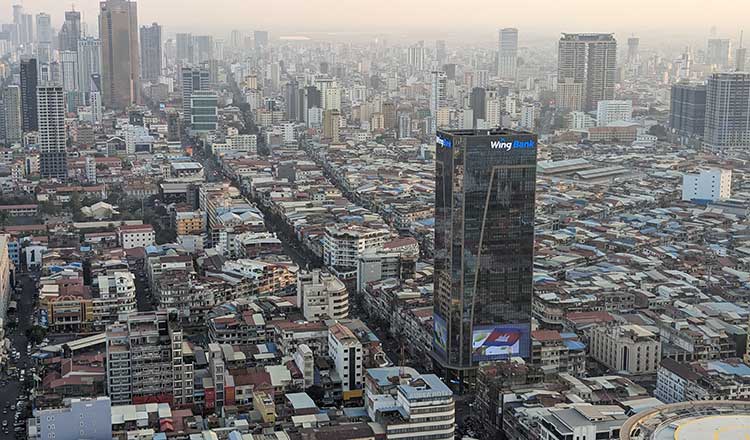
The economic performance of Cambodia had been remarkable over the last two decades prior to the Covid-19 pandemic with the GDP growing annually about 7.8 percent on average between 2010 and 2019. The poverty rate has declined from 33.8 percent in 2009 to 17.8 percent by 2019-2020.
After the Covid-19 slowdown, Cambodia’s economy started to pick up in 2021 thanks to the early reopening of the country and the prudent economic policies of the government. In 2023, Cambodia is believed to have grown by five percent as per the International Monetary Fund’s (IMF’s) Regional Economic Outlook of April 2024.
According to the IMF, Cambodia will grow at the rate of six percent this year and 6.1 next year. In ASEAN, it is only next to the GDP growth of the Philippines at 6.2 percent for both years.
The Asian Development Bank (ADB) and the World Bank in their latest reports also forecast that Cambodia will grow at 5.8 percent this year. The Ministry of Economy and Finance of the Royal Government of Cambodia expects an even higher growth at 6.6 percent this year.
But the impending graduation of Cambodia from the Least Developed Country (LDC) status, now slated to take place by 2029, has brought in fresh challenges such as the need for the country to diversify its economy fast from the traditional garments, footwear and travel goods (GFT) industry and attract more foreign direct investments (FDIs).
A recent study by the United Nations Development Programme (UNDP) showed that graduation would drop Cambodia’s nominal GDP by $2.94 billion over the four-year period from 2027-2030.
(Assuming that the graduation would take place in 2027 as per the earlier schedule given by the UN).
Much of this setback would be due to the withdrawal of the preferrable trade tariffs by the EU and the US for Cambodian goods which it enjoyed as an LDC country. This implies that Cambodia needs to look beyond GFT and diversify its exports and economy.
In addition, according to UNDP, Cambodia’s economy remains at large vulnerable to external shocks, including the aftereffects of the Covid-19 pandemic, the global geo-politic uncertainty, wars, and other crises.
To effectively navigate the LDC transition, the recently-released ‘Asian Development Outlook (ADO) April 2024’ stressed that Cambodia needs to enhance its global economic integration, diversify markets, focus on higher value-added products, invest in sustainable infrastructure and human capital and strengthen domestic resource mobilization.
Adding to these is the challenge of attracting more foreign direct investment (FDI). Though some reports of global market intelligence placed Cambodia as the top emerging market for FDIs this year, there are still concerns.
Anthony Galliano, Group CEO of Cambodian Investment Management, who closely watches the Cambodian economy, shared with Khmer Times the recent trends in FDI flow from the US and Europe to Southeast Asia.
Anthony said that it is a matter of deep concern that Cambodia is not a major beneficiary of some of the big investments by US and EU companies in Southeast Asia.
According to him, Cambodia did not feature in some of the notable recent investments by US companies including Amazon Web Services (AWS) which made an additional $9 billion investment to expand cloud infrastructure in Singapore, topping up its already $8.5 billion investment.
Anthony said AWS is also planning to invest $6 billion in Malaysia and $5 billion in both Thailand and Indonesia. “Microsoft is also placing bets in Southeast Asia as well with a $250 million investment in Singapore, a $1.7 billion investment in cloud and AI infrastructure in Indonesia, and $2.2 billion investment in Malaysia for cloud computing and Artificial Intelligence infrastructure,” he noted.
Anthony added that available information indicated that Nivedia, one of the US’ fastest growing companies, will invest $200 million in an AI center in Indonesia and plans to expand its investment with Vietnam through IT giant FPT Corp with a $200 million AI factory that incorporates their technology.
According to Anthony, Amkor Technology has already opened a semiconductor plant in Vietnam’s northern province of Bac Ninh at the cost of $1.6 billion, designed to become the US company’s biggest manufacturing base in the world.
“It’s not just the US alone that is investing substantially in Southeast Asia, Europe is also, with Vietnam being the darling as the top destination for European companies to expand their business, an example being Lego building a $1 billion factory in Ho Chi Minh City. Trade agreements are also fuelling investments in Vietnam, the EU-Vietnam Free Trade Agreement (EVFTA) and the US-Vietnam Comprehensive Strategic Partnership being the major deals,” he said.
“With the waves of investments in the Southeast Asian region flowing from the US and Europe recently, it is deeply concerning that Cambodia is not a major beneficiary and maybe experiencing a significant opportunity loss,” he noted.
According to the Council for the Development of Cambodia (CDC), Cambodia attracted investment of $2.2 billion in the first quarter (Q1) of this year.
Cambodia approved 106 investment projects during the January-March period this year, significantly up from only 39 projects over the same period last year, generating approximately 107,000 jobs, the CDC said.
According to Anthony, for Cambodia to compete in the region, a major modernization of its economy will be needed with massive innovation in tech, especially AI, digitalization, and data. “The nation’s major pillars are fragile in an increasingly digital and high-tech global economy, garments being viewed as a sunset industry, tourism intensely competitive, and real estate and construction highly cyclical,” he said.
For this, Anthony said, Cambodia has to build greater and broader confidence and diversify its foreign investment base. The keys may very well be low-cost, yet highly skilled workforce, tariff concessions, intellectual property rights, investor protection, tax incentives and certainty in the system, lower electricity costs, improved infrastructure and harvesting natural resources.
And, in Anthony’s opinion, perhaps the most challenging are data policies and navigating the US and China rivalry as geopolitical tensions simmer.
Slow diversification
According to a recent ADB report, slow diversification hinders long-term economic growth in Cambodia. While Cambodia has successfully shifted its economic centre from agriculture to industry and services, it has been less successful at diversification within these sectors and reallocating factors of production to higher value-added products and services, it noted.
Garments, footwear, and travel goods (GFT) accounted for about three-quarters of total manufacturing and 62 percent of total exports in 2022. Further, Cambodian export markets remained highly concentrated, with the United States and the European Union accounting for 63 percent of total exports that year.
According to ADB, lagging diversification and concentrated markets leave the economy vulnerable to external shocks. Forthcoming graduation from its current LDC status will present new challenges, including a reduction in preferential trade treatments, most notably from the European Union market and waning Official Development Assistance (ODA) from development partners.
Accelerating economic diversification ahead of the LDC graduation and expiration of these concessions would offer Cambodia more opportunities to create higher-value jobs, strengthen resilience to external shocks, and ensure sustainable growth.
According to Thong Mengdavid, Geopolitical Analyst and Lecturer at the Institute for International Studies and Public Policy (IISPP) at the Royal University of Phnom Penh (RUPP), diversifying the economy is essential for Cambodia for several reasons.
Presently, Cambodia’s economy is heavily dependent on a few key sectors, including garment manufacturing, construction, agriculture, and tourism. With the global shift towards more digitalized, industrialized, and automated markets, Cambodia must reduce its reliance on these sectors to avoid vulnerability to sector-specific shocks and global economic fluctuations, he noted.
According to Mengdavid, diversification will enable Cambodia to enhance economic stability, create more jobs, develop a skilled labour force, and promote sustainable growth. Additionally, it will make the economy more resilient to shocks, add value, attract foreign investment, modernize agricultural and agro-processing practices, and improve vocational and higher education while advancing electronics and automotive parts manufacturing.
He said Cambodia’s government, with support from international organizations, is already taking steps to diversify the economy through policy initiatives, infrastructure investments, and educational reforms. However, successful diversification will require ongoing efforts, strategic planning, and collaboration between the public and private sectors.
According to ADB, in 2019, Cambodia’s investment in infrastructure was only 2.9 percent of GDP, falling short of ADB’s recommended threshold of five percent of GDP required to sustain long-term economic growth. The government recently announced a $36.6 billion infrastructure investment plan for the next decade, highlighting the essential role of the private sector in achieving these investment goals.
The ADB report said private infrastructure investment, however, is still constrained by regulatory and governance risks and an underdeveloped framework for public-private partnerships (PPPs). As a result, Cambodia lags in infrastructure development, ranking 106th out of 140 economies.
LDC graduation
It may be recalled that the UN’s preliminary evaluation for the 2024 triennial review has found Cambodia in a good position for exiting LDC status with the country scoring well in all three criteria.
While Cambodia’s Gross National Income (GNI) per capita score of $1,546 is well above the threshold of $1,306 set for graduation, the country also achieved a good score of 77.7 on the Human Assets Index (HAI), which is above the graduation threshold of 66.
The Kingdom progressed well in the Economic and Environmental Index (EVI) as well with a score of 23.3 (the threshold for this category is 32 or below).
Cambodia is also expected to be an Upper Middle Income Country by 2030 and a High Income Country by 2050. The Royal Government pins its hopes on the Pentagonal Strategy Phase 1, initiated by Prime Minister Hun Manet last year, to steer the country to reach the tough targets.
While graduation is considered a development milestone for the country, it also means loss of trade benefits enjoyed by LDCs, including duty-free status under the Generalized System of Preferences (GSP) by various countries especially the European Union (EU).
“Cambodia is well aware of the up-front costs associated with graduation,” said Bin Troachhey, Minister of Planning and Chair of the National Committee for Cambodia’s LDC Graduation, in his presentation before the Expert Group Meeting of the UN Committee for Development Policy, earlier in January this year.
First, the country’s narrow and commodity-dependent economy base, relying on few growth drivers and concentrated exports of manufacturing and agricultural products, mainly unprocessed agricultural commodities, makes Cambodia vulnerable to external shocks, Troachhey said.
Second, Cambodia’s economy has been based on agricultural and labour-intensive sectors, with 36 percent of the population aged 15-64 working in the agricultural sector in 2021, while the contribution of agriculture to the GDP growth was only 17 percent in 2022.
Third, Cambodia’s labour force is still characterized by lower educational attainment, as well as technical and professional skills, despite remarkable progress in education over the past decade.
“After graduation, Cambodia’s exports would face higher tariff rates, stringent rules of origin, and market competition. As the graduation will have strong negative impacts on exports of agricultural products (especially rice) and manufacturing products (especially garments, footwears, travel goods and bicycles), the loss of the above benefits could limit fiscal space for socio-economic development,” the minister said.
According to ADB, Cambodia should pursue new free trade agreements (FTAs) and act promptly to accelerate trade reforms to deal with the emerging challenges post-LDC. The opportunities include wider access to capital, more investor confidence & trade opportunities.
For realizing these benefits, Cambodia will require proactive efforts from both the government and the private sector, an ADB blog said.







